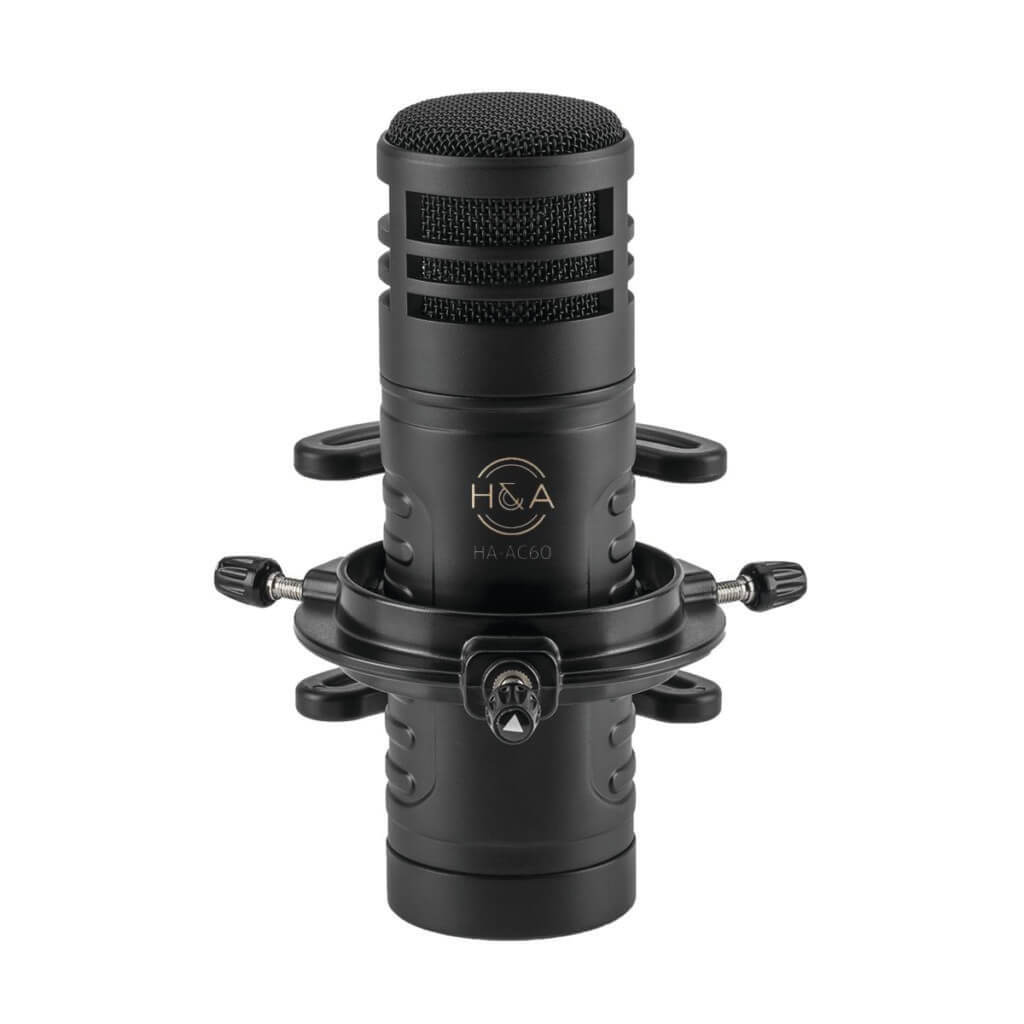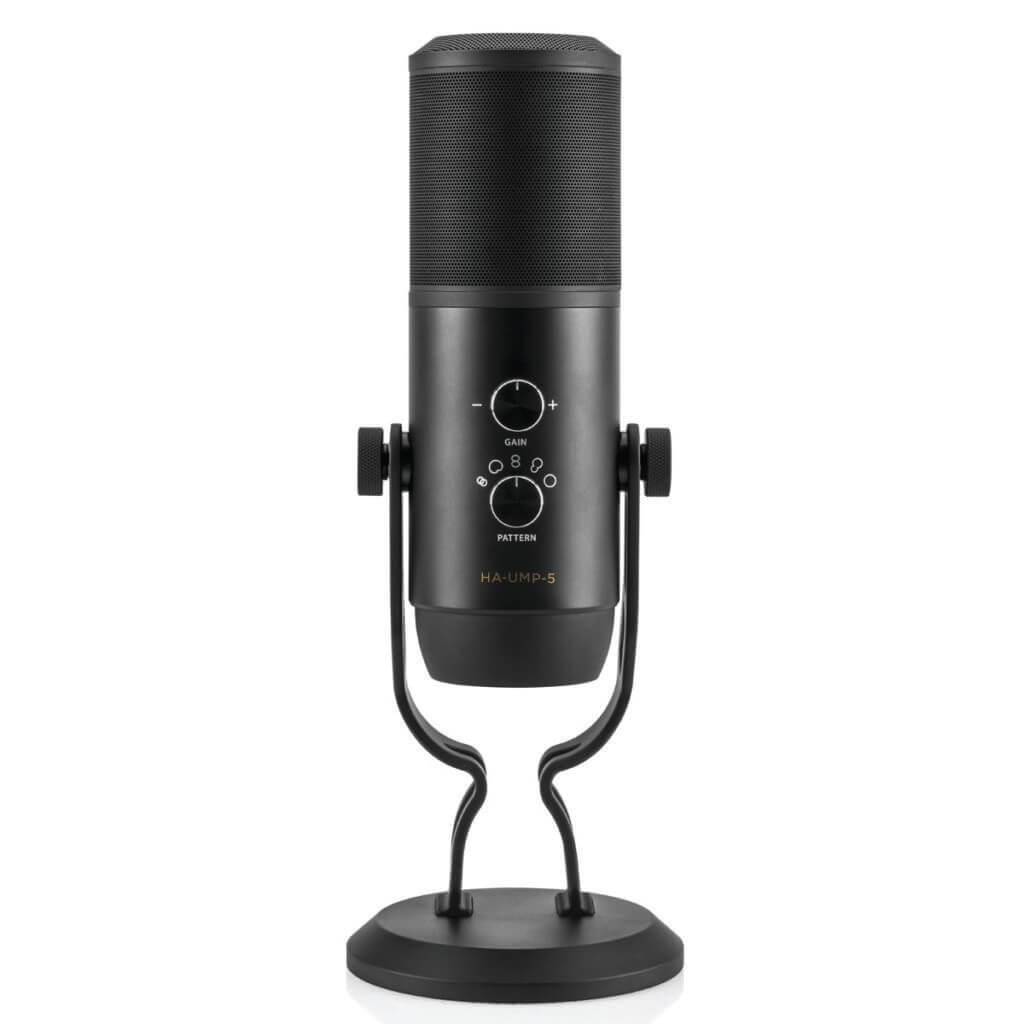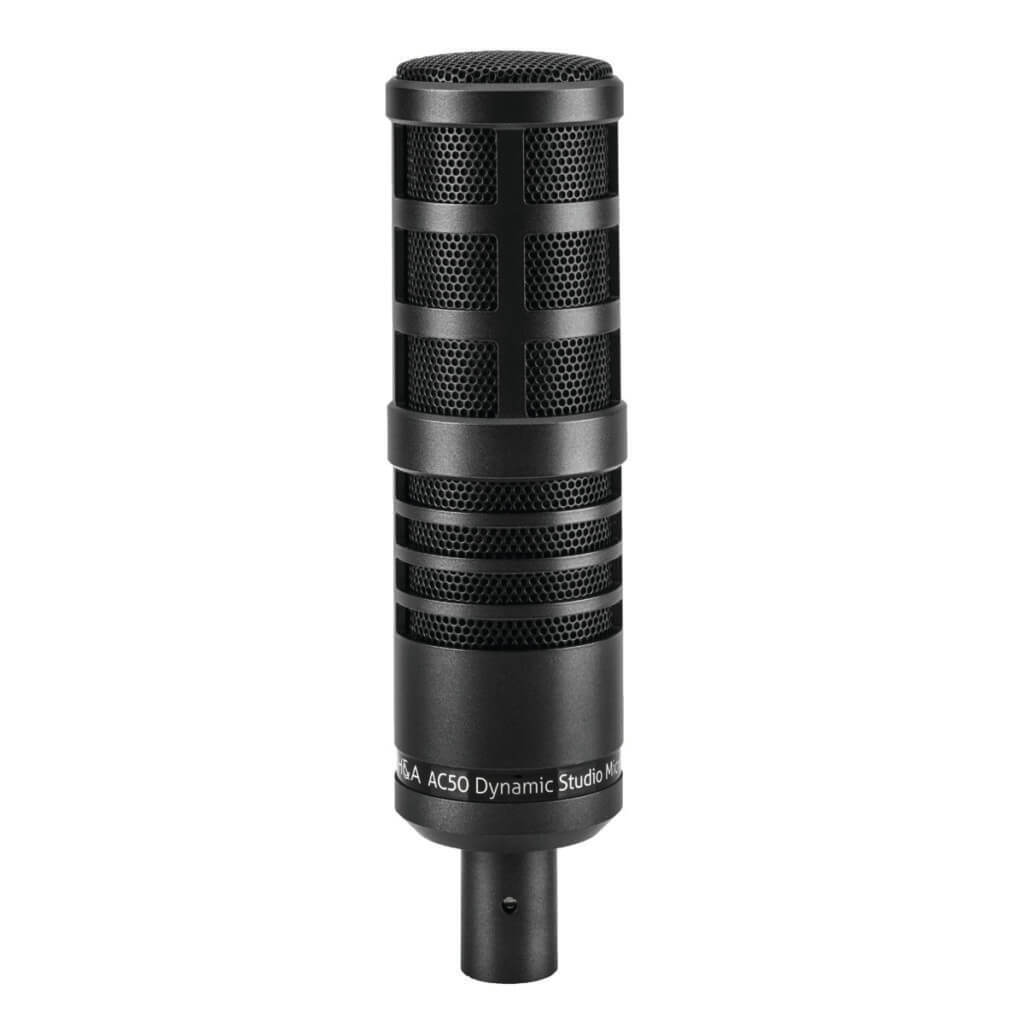H&A AC-60 Large Diaphragm Hypercardioid Dynamic Mic

Bleed over is always a concern when it comes to any kind of recording, from other sound sources, or even just room reflections. H&A’s AC-60 has a fantastic and clear off-axis response that works great in vocal or instrument situations.
This isn’t the usual, USB/all-in-one mic type deal, with an XLR connection and the included shockmount, it’s more along the line of a professional level piece. The two switches on the bottom cover a low cut or bass roll off, and a midrange switch that favors the 6kHz to 10kHz frequency range, great for vocals and guitars.
We put it through its paces doing some vocal overdubs on an existing track, and found we liked having the simple flexibility of the low cut and mids, it didn’t take long finding settings that worked well. This is all dependent on the particular vocalist, music, and desired response, of course, but tweaking things shouldn’t take long. We really liked the overall clarity it also delivered.
Micing up an acoustic guitar was very pleasurable, just placing the microphone between the 12th fret and the sound hole gave excellent results, Again, the tweakability of these EQ options was quite nice, and can certainly be useful in taming lower boomy frequencies of a large D-style guitar, and enhancing the midrange response overall. On bass amps this could easily help add in that extra “air” needed, without getting flabby, and maintaining that punctuation of the notes. Kick drums that somehow seem to end up in every other frequency could also benefit from this as well.
The off-axis response was very nice; we didn’t have any issues from bounce back on our room space or other instruments. The only downside we found was that we needed to really up the input gain on our interface, especially when having the mic about a foot away from a voice, talking at a normal volume. It’s not a phantom powered unit, and we really had to get on it a bit to get a comfortable signal. Overall though it’s a nice, easy to use microphone that has plenty of practical uses for instruments and vocals.
PROS:
Nice clear sound, excellent off-axis response, included shock mount
CONS:
Somewhat low signal strength.
STREET PRICE:
$149
H&A UMP-5 Professional USB Multi-Pattern Condenser Microphone

All-in-one, jack of all trades items often do some things well, and in other aspects seem to fall short. In the case of microphones if it doesn’t do everything well, you might be better off with multiple microphones. H&A’s UMP-5 delivers all the options in one package.
First off this is a large mic, but that makes sense, as inside the aluminum casing are five 14mm diaphragms with five selectable patterns: Cardioid, SuperCardioid, Omnidirectional, Bi-directional, and Stereo, and some fairly large knobs on the casing for pattern selection, mic gain, and headphone levels and a mute switch. At the base is a threaded mic stand connection, plus USB and headphone inputs. A large and well weighted base allows for desktop use and adjustability of angle of the microphone.
Connection was super simple, with no drivers or external software required to get things up and running. We were immediately impressed with the sensitivity of the mic right off the bat, which is something we’re not used to in USB mics. It responded like a far more expensive XLR microphone. Scrolling through all the patterns was equally impressive, with each mode offering up perfect audio examples of their respective variants. It runs at 16bit, and has its own D/A converters, so be sure if you’re running a session to match the bit rate in your DAW for optimum performance.
We put it through its paces in desktop mode, doing spoken word type situations, along with vocal and instruments, and we found selecting the correct mode for whatever we were doing yielded great results overall. It will react nicely in any application, but works especially well in voice overs, and in the podcasting/environment, Vloggers might appreciate the sensitivity and range of not having the mic in your face to get a strong signal. Put this mic in stereo mode for putting a singer on one side, and an acoustic guitar on the other, and duos can easily use this for easy tracking or live streaming.
To get nit-picky, the sensitivity was almost too much at times, and can really pick up a lot of the ambient reflections and room noise and moving it around on the mic stand generated a ton of noise, so be aware to put it on mute if it’s getting moved around during an interview. The low bitrate response might throw off some users, but for podcasts and home users it’s not a bad mic to start off with, with plenty of options for a variety of situations.
PROS:
Good price, multiple pattern selection.
CONS:
Somewhat sensitive, only 16-bit A/D convertor.
STREET PRICE:
$99
H&A AC50 Cardioid Dynamic Studio Broadcast Microphone

At first glance, it looks very reminiscent of an RE320, and with an all-aluminum casing it’s quite light. The capsule design is a Cardioid, and the pop filter is internally located. At the base of the mic there is a small switch allowing the user to choose between a flat or low-cut EQ option, which does reduce the low frequencies by about 10dB.
First off, this is meant as a broadcast style microphone, meaning great for podcasters, voiceover artists, etc. The big signature is the off-axis response, meaning if you’re not pointing it at the sound source, the audio doesn’t get picked up. This eliminates background noise issues as well as any problems in the room it’s being used in.
There is minimal coloring in the flat setting in vocal applications, and the low-cut filter really does drop out any flabbiness that could be present. The off-axis response is excellent as well. But one thing about a good mic is using it for other applications. We tried using it on a session with an acoustic guitar running DI and a vocalist using the AC50. It did pick up a bit of the ambient acoustic guitar, but it was minimal, and more than acceptable in a broadcast/podcast/videocast situation. There’s a lot of potential for other uses, such as drums, where the off-axis response could really help keep bleed over to a minimum when used on floor toms and kick drums.
A couple of things we noted during our session — we really had to crank the gain up on our interface’s input level to get a healthy signal and had to really “get on” the mic for vocals. With the level up this high, the capsule really picked noise from being adjusted on a mic stand, so a shock mount might be a good accessory to eliminate this issue.
With the included mic mount and padded case, it’s a pretty decent setup for $99. For users looking to start a mic locker, it’s worth a look. For podcasters and streamers looking to get out of the USB mic world, this might be your ticket…
PROS:
low-priced starter studio mic.
CONS:
slightly low output, could benefit from a shock mount.
STREET PRICE:
$99.95
